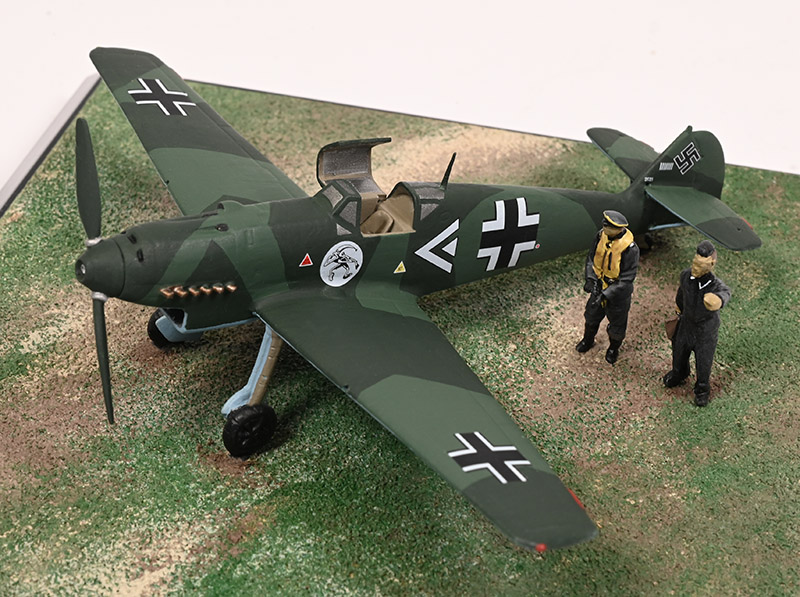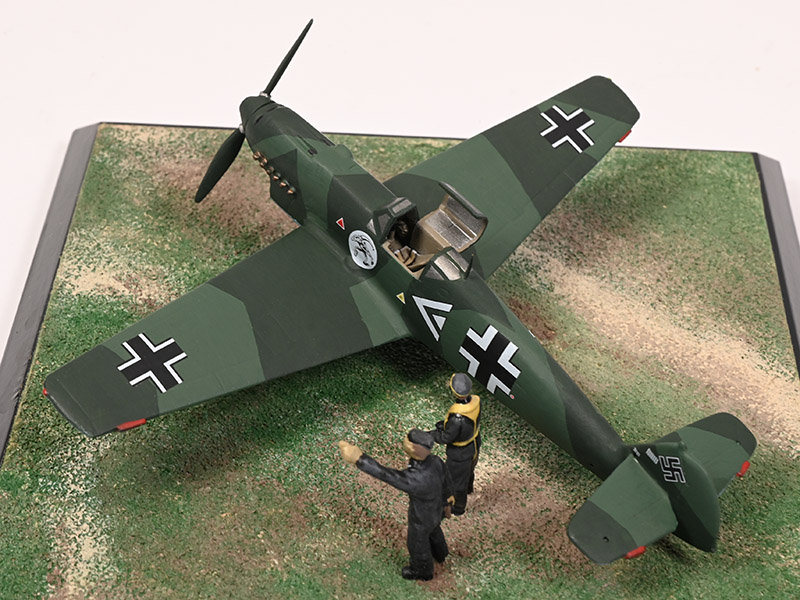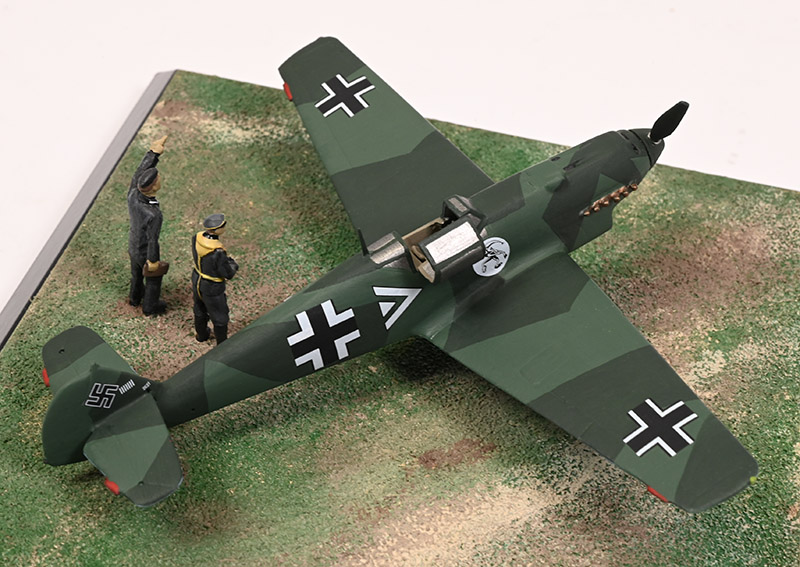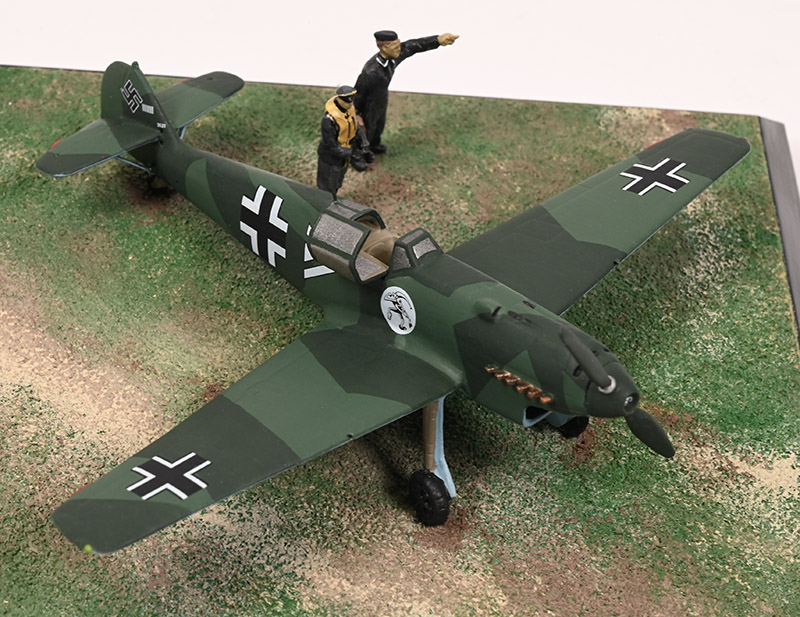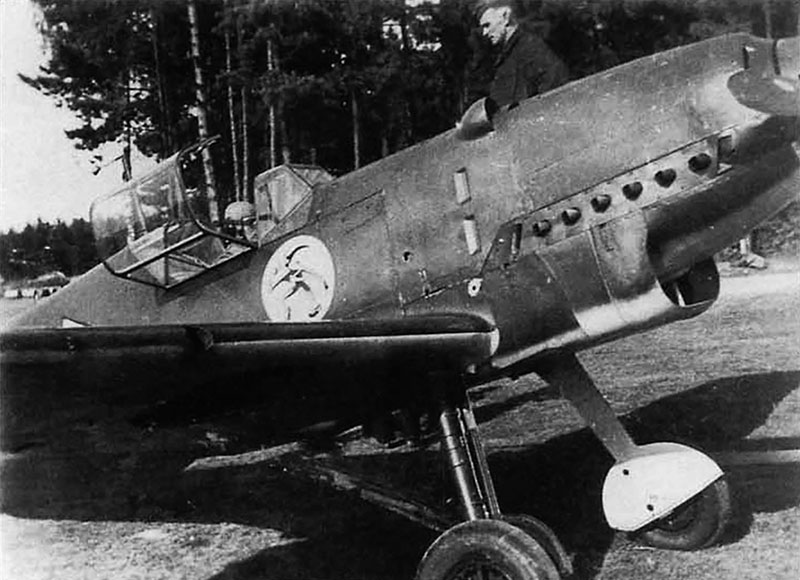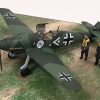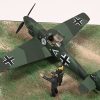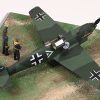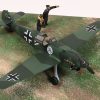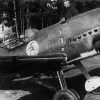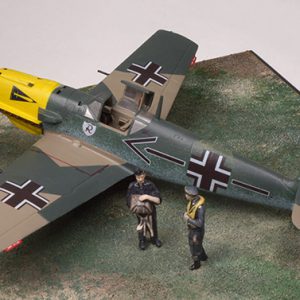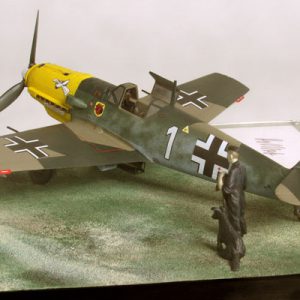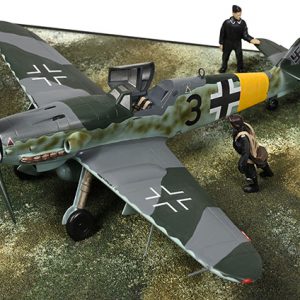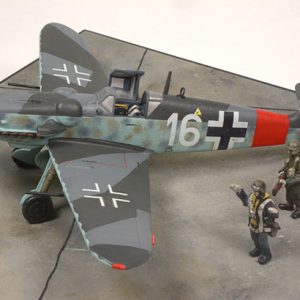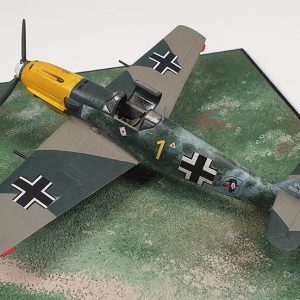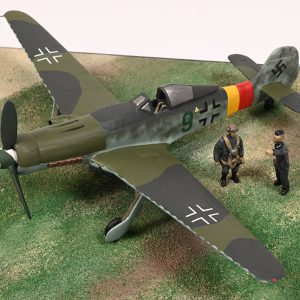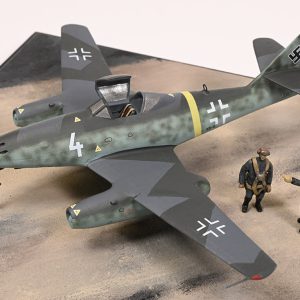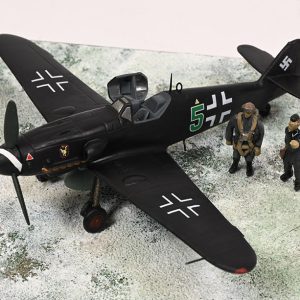Messerschmitt Bf 109 D-1 ‘White Chevron & Triangle’ Werknummer 2621
Stab Jagdgruppe JGr 102, Gruppenkommandeur Johannes Gentzen, Poland, September 1939
Developed from the V10 and V13 prototypes, the Bf 109 D was the standard version of the Bf 109 in service with the Luftwaffe prior to the start of World War II. A total of 647 Bf 109 Ds of all versions were built by Focke-Wulf, Erla, Fieseler, Arado and AGO. Messerschmitt is listed as having produced only four Bf 109 Ds, probably the D-0 preproduction series with the serial production transferred to the licensed manufacturers. Several Bf 109 Ds were sold to Hungary. Switzerland bought 10 109 D-1s (Serial Numbers from 2301 until 2310) which were built by the Arado-Flugzeugwerke GmbH. The dora variant saw only limited service during the war, as all of the 235 Bf 109 Ds still in Luftwaffe service at the beginning of the of the conflict were replaced by the Bf 109E, except in certain night fighter units where examples were deployed into early 1940. Variants included the D-0 and D-1 models, both having a Junkers Jumo 210D engine and armed with two wing-mounted and two nose-mounted 7.92 mm (.312 in) MG 17s.
Bf 109 Ds, first saw active service in the Condor Legion. The Bf 109 quickly replaced the Heinkel He 51 biplane fighter which suffered many losses during the first 12 months of the conflict.
When the German invasion of Poland began on the 1st September 1939, JGr 102 had 46 Bf 109 Ds serviceable for the campaign. The group, under the command of Hauptmann Johannes Gentzen, claimed 28 Polish aircraft in aerial combat and a further 50 on the ground. Colonel Stefan Pawlikowski’s Warsaw Pursuit Brigade resisted fiercely but lost 17 percent of its fighting strength on 1st September which rose to 72 percent over the next five days. One of JGr 102’s missions provided fighter escort for Ju 87 Stuka dive-bombers in the bombing of Wieluń. No Polish aerial resistance was encountered. Gentzen himself claimed seven victories in two days. On 3rd September he shot down a PZL.37 Łoś medium bomber and two PZL P.11 fighters. The next day he claimed four PZL.23 Karaś attack-bombers. Gentzen was the sole Bf 109 flying ace of the Polish campaign. Gentzen remarked that the Bf 109 pilot’s success over Poland depended largely on luck. The Polish air force were masters of camouflage, their olive-brown colour scheme blending excellently with the terrain.
Gentzen’s Bf 109 D-1 (werknummer W.Nr. 2621) wears an early war paint scheme comprising RLM 70/71 green tone splinter pattern with RLM 65 blue undersurfaces. The Hunter of Bernburg emblem on the fuselage honours JGr 102’s home town and place of formation in Saxony-Anhalt.
Gentzen went on to fly Bf 110 C’s with I./ZG 2. On 26th May 1940, during the Battle of France, the airfield was raided by a pair of RAF Blenheims. Gentzen and his crewman raced for the squadrons one serviceable heavy fighter. In their haste to get airborne, neither man strapped themselves in properly. On take-off, the tail of their Bf 110 C clipped the tops of the trees bordering the end of the airfield and the aircraft cart-wheeled into the ground, killing the two occupants.


